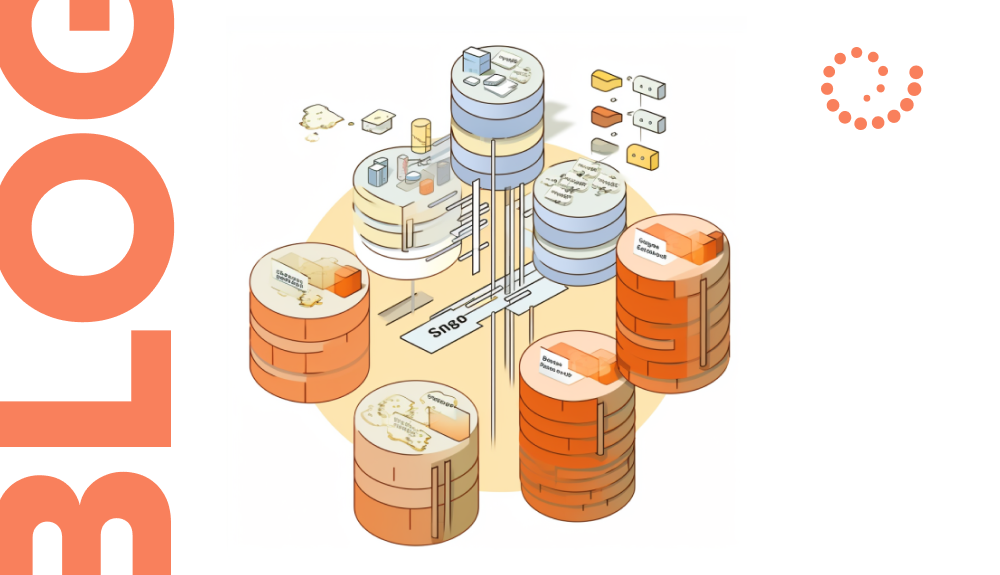
Mastering Smart Invoicing through Seamless Supplier Integration
Alexandr Orlenko | September 5th, 2023
In the dynamic world of modern commerce, the importance of e-invoicing has become a cornerstone of operational efficiency. Seamlessly integrating this digital mechanism into your business workflow isn’t just a prudent choice; it’s the only way forward. But the road to harmonizing multiple suppliers and orchestrating a streamlined process isn’t without its challenges.
Integration: The Digital Confluence
Visualize the digital confluence below, a network of paths that converge to create invoices. Similar to a software architecture diagram, these channels include system-generated invoices, data streaming in from a vendor’s ERP, and even data retrieval from government agencies. The intricate interplay underscores the complexity of modern invoicing workflows.
Navigating the Buyer’s Landscape
Buyers need this flexibility for consolidating invoices from all suppliers into a single location. From the buyer’s perspective, it is a strong requirement to make this process a successful and meaningful one. But once again, this integration can be developed in a number of different ways. The system can provide some ways to integrate, or it can simply provide an API to allow suppliers or integrators to build a connection themselves.
We know that buyers are big customers and they have their own processes that may require some additional approvals and validations. So they need some internal integrations as well. Incoming invoices need to be integrated into those processes and into their own ERP systems to make payments.
Multiply that by the need to be present in different countries with their own tax and regulatory rules and you can imagine how complex such integrations can be. In this case, we are talking about a hierarchy where we have a master account with several branches representing different countries. It just sounds impossible to configure and build it the way the buyers need it without the involvement of a professional service.
These internal integrations may require some custom development to connect the buyer’s ERP and eProcurement system, then it would be great to have as few such integration layers as possible. Because you know that each integration is a new weakness. And when different teams support such integrations, it is very difficult to investigate when something happens.
I once saw three layers of integration between two systems, which means five teams involved in an investigation. It was a nightmare to get everyone together, find a problem and agree on a solution.
The Seller’s Onboarding Sequence
In the programming world, a successful onboarding sequence is like the first lines of code in a new software project. It sets the tone for the entire journey. The seller’s portal becomes their gateway to a world of digital invoicing possibilities. When they log in, the interface recognizes them and guides them through the intricacies of creating their first invoice.
Imagine the cascade of events — a series of invitations from buyers, each representing a potential revenue stream. The success of your software ecosystem depends on these initial interactions, making the onboarding process a critical chapter in the growth story.
In this overture to integration, simplicity is the reigning principle. Like an elegant piece of code, the onboarding process must focus on delivering essential functionality and fostering a seamless experience that prevents complexity from overwhelming.
Sellers: Navigating Diversity at The Crossroads
Sellers stand at a crossroads of diversity, resembling a code base rich with modules, each brimming with different functionalities. In this intricate matrix, each seller’s preference becomes a module, a key player in the symphony of integration, their choice tailored to the historical practices and unique requirements of their buyers. Just as developers meticulously evaluate frameworks before making a choice, these sellers embark on a similar journey, meticulously evaluating systems. Their ultimate goal? A unified sanctuary where all sales channels converge, eliminating the chaos of managing multiple accounts.
The system’s promise to harmonize sales, quell the turbulence of account hopping, and lay the groundwork for future expansion resonates deeply. In the realm of code, this reflects the art of creating an extensible software architecture. Sellers aren’t just users; they become advocates. They see this system as a bridge, not just a short-term fix, but a transformative catalyst. This conviction compels them not only to adopt it, but to passionately champion its virtues and recommend it as a solution to their buyers.
Conclusion: Creating Value Through Code
To wrap it up, it’s crucial to bear in mind that selecting a dependable partner is paramount. With a wealth of experience and extensive expertise, such a partner will oversee the entire integration process and offer comprehensive support to ensure uninterrupted operations.
While the “win-win” mantra sounds like music, the symphony of software development is written in lines of code. It’s imperative to remember the end users, the buyers and sellers, for whom the system is a digital stage. In the pursuit of creating value, we don’t just code; we compose experiences that resonate.
I eagerly await your thoughts and insights.
Take care!
Explore Previous eProcurement Articles:



Let’s start building something great together!
Contact us today to discuss your project and see how we can help bring your vision to life. To learn about our team and expertise, visit our ‘About Us‘ webpage.

Recent Posts
- Merchant Integration Methods for Complex Catalog Structures
- Criteria for Psychological Health: 15 Lessons for the Corporate World
- Idea Ping-Pong: Mastering the Art of Collaborative Innovation
- How Setronica Created an AI Slack Bot, Part 2: From Code to Conversation
- Scheduled Tasks in Spring: Scaling Challenges, Standard and Non-Standard Solutions

